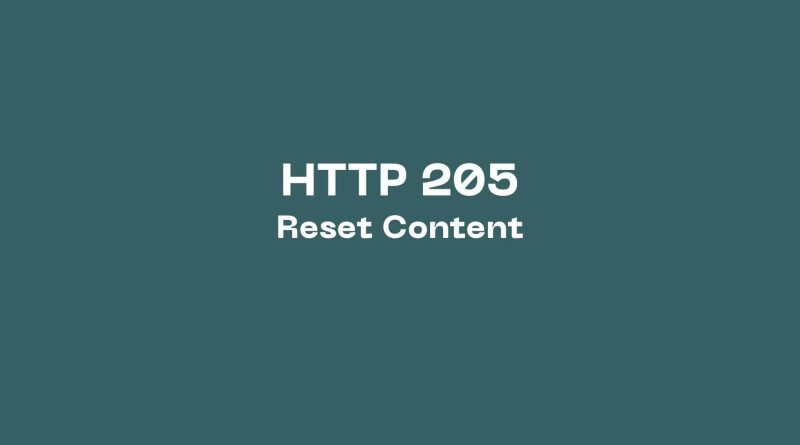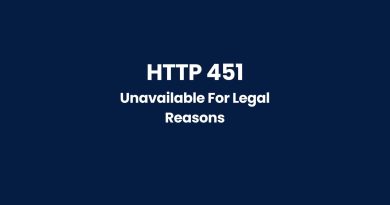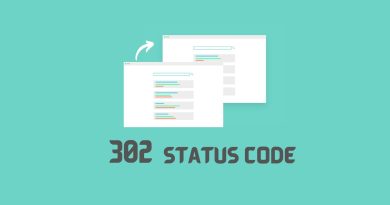Understanding HTTP 205 Status Code: A Comprehensive Guide
The Hypertext Transfer Protocol (HTTP) is an integral part of the digital age. It’s used to transfer data between a web server and client, enabling websites to be seen on browsers around the world. But what happens when unexpected errors occur? In this article, we’ll explore HTTP 205 Reset Content: A Comprehensive Guide.
This guide will provide readers with deep insight into how HTTP 205 works and its purpose in response codes. By the end of this comprehensive guide, you’ll have a better understanding of how HTTP 205 Reset Content works and why it’s important for managing online resources.
What Is Http Status Code 205
HTTP Status Code 205 is a response to the client’s request that instructs the user agent to reset its view of the requested resource and, if appropriate, any associated message body consisting of the requested resource. This particular status code is part of HTTP Successful Responses.
In more detail, this specific status code indicates that after receiving and interpreting the request from the user-agent, either due to successful execution or an error condition being encountered by the origin server, it has determined that no further action needs to be taken on behalf of itself with regard to completing/executing the said request.
Rather than sending back a full http response along with potentially a message body comprised of content related to what was initially requested, instead sends back just enough information for the user-agent (browser) in order to cause it to reset whatever view was currently active prior to making their initial request.
The HTTP status code 205, or ‘Reset Content’, is a lesser-known but important for data entry mechanism. It signals to the user agent that an origin server supports data entry of common form fields and any document view while allowing the message body to be reset when necessary. This can easily initiate a new connection immediately if the server refuses to accept a certain set of information from the user.
These types of responses can help speed up page loads where multiple requests are made against resources whose views may have changed since previously cached versions were stored, thus saving both time and bandwidth when compared against downloading an entire new version each time something changes.
205 Http Status Code Flow Example
The communication flow between a client and a server that results in the server sending an HTTP 205 Reset Content status code:
- The client initiates a data entry request to the server. The request can be any type of HTTP request such as POST, PUT, or DELETE.
- The server processes the request and determines that there is no content to send back to the client. This could happen in a variety of scenarios such as:
- The request was successful but did not result in any data being created or updated.
- The client requested a resource that no longer exists.
- The client requested a resource that the server cannot provide at this time.
- Once the server has determined that there is no content to send back, it sends an HTTP 205 Reset Content status code to the client.
- The client receives the HTTP 205 status code and resets the current view. Depending on the type of request, the client may also perform additional actions such as clearing form fields or redirecting the user to a new page.
Here’s an example of what the client request and server response might look like in a scenario where the client submits a form and the server processes the request successfully but does not have any data to send back:
Client Request:
POST /submit-form HTTP/1.1
Host: example.com
Content-Type: application/x-www-form-urlencoded
Content-Length: 23
username=johndoe&password=password123
Server Response:
HTTP/1.1 205 Reset Content
In this example, the client sends a POST request to the server with a username and password in the request body. The server processes the request successfully but does not have any data to send back. Therefore, it sends an HTTP 205 Reset Content status code to the client. The client receives the status code and resets the form view, allowing the user to submit another form without any previous input.
Other Similar Status Codes To Http 205?
Other similar status codes exist which also signal a successful exchange between client and server in regard to web content delivery. For example, 200 OK is used whenever requested content is delivered without any issues; 301 Moved Permanently indicates that the resource has been assigned a new permanent URI; 304 Not Modified tells the browser not to download the content again as it hasn’t changed since last cached version was stored on disk.
Browser Compatibility Of Http 205
In terms of browser compatibility, HTTP 205 Reset Content has been supported by all major web browsers since its inception. This means both clients and servers can send messages back and forth without issue if they agree on the same protocol version. Moreover, when employing such mechanisms across multiple platforms, users may experience quicker page loading times due to greater efficiency when dealing with requests.
This makes HTTP 205 Reset Content an invaluable tool for modern web developers who need more control over how their pages are rendered on different devices and networks.
All HTTP status codes by categories
Informational responses
(100 – 199)



